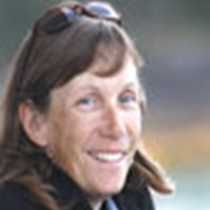Isla Magdalena – Sand Dollar Beach & Hull Canal
We awoke this morning to a quiet and peaceful anchorage in Magdalena Bay. Some of that peace was due to the blanket of fog that crept in during the night. But, even in the fog there were things to be seen. Bottle-nosed dolphins and a few California sea lions circled around the ship at first light. Once we were introduced to the ship and the expedition staff we headed ashore for our first exploration of Isla Magdalena.
The fog lifted soon after our arrival ashore and revealed the beautiful and expansive dunes. A short hike across the island showed us that more lives here than we would expect. Jackrabbit and coyote tracks criss-crossed the dunes, while tenacious dune plants struggled to keep their foothold among the shifting sands. The fog, we learned, is an important water source for the plants and animals that call this place home. The aptly named sand dollar beach had something for everyone. New discoveries were everywhere. A sea lion skull, a shell or a bird bone was all it took for one of our naturalists to weave fascinating stories. Those who were drawn to the waves used many of their senses to explore them. The sound of the crashing breakers, the temperature of the water and the feel of the wave as it crashed on you made long-lasting impressions.
In the afternoon we proceded north through a narrow, mangrove-lined channel that connects the north and south end of Magdalena Bay. We spent the afternoon scanning for birds, dolphins and gray whales. Our efforts were rewarded with many species of shorebirds and herons, as well as ospreys, frigatebirds, brants and pelicans. The most fun critters to watch, however, were the bottlenose dolphins that would come over to the ship for a free ride. They take advantage of the pressure wave in front of the bow and seem to ride effortlessly along.
The one other marine mammal we saw today was the California gray whale. This is their winter home, the place where they are born and where the calves gain the strength to swim 6000 miles north. We are heading to bed looking forward to seeing what tomorrow’s whale watches will bring.
We awoke this morning to a quiet and peaceful anchorage in Magdalena Bay. Some of that peace was due to the blanket of fog that crept in during the night. But, even in the fog there were things to be seen. Bottle-nosed dolphins and a few California sea lions circled around the ship at first light. Once we were introduced to the ship and the expedition staff we headed ashore for our first exploration of Isla Magdalena.
The fog lifted soon after our arrival ashore and revealed the beautiful and expansive dunes. A short hike across the island showed us that more lives here than we would expect. Jackrabbit and coyote tracks criss-crossed the dunes, while tenacious dune plants struggled to keep their foothold among the shifting sands. The fog, we learned, is an important water source for the plants and animals that call this place home. The aptly named sand dollar beach had something for everyone. New discoveries were everywhere. A sea lion skull, a shell or a bird bone was all it took for one of our naturalists to weave fascinating stories. Those who were drawn to the waves used many of their senses to explore them. The sound of the crashing breakers, the temperature of the water and the feel of the wave as it crashed on you made long-lasting impressions.
In the afternoon we proceded north through a narrow, mangrove-lined channel that connects the north and south end of Magdalena Bay. We spent the afternoon scanning for birds, dolphins and gray whales. Our efforts were rewarded with many species of shorebirds and herons, as well as ospreys, frigatebirds, brants and pelicans. The most fun critters to watch, however, were the bottlenose dolphins that would come over to the ship for a free ride. They take advantage of the pressure wave in front of the bow and seem to ride effortlessly along.
The one other marine mammal we saw today was the California gray whale. This is their winter home, the place where they are born and where the calves gain the strength to swim 6000 miles north. We are heading to bed looking forward to seeing what tomorrow’s whale watches will bring.




